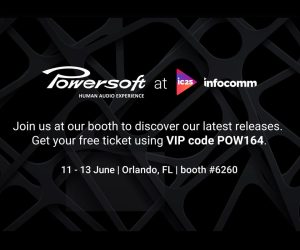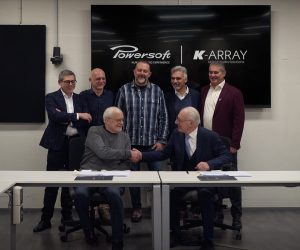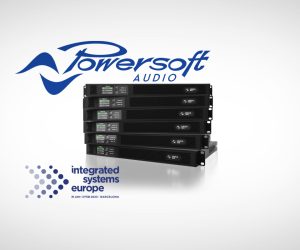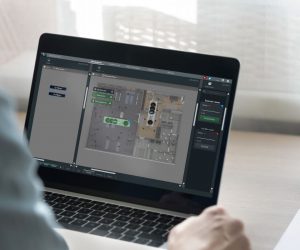
Powersoft Drives Immersive Dr Who Experience in London
A number of T Series amplifier platforms were selected by Autograph, to drive the versatile and complex audio system.
Although the words ‘TARDIS’, ‘Dalek’, and ‘Cyberman’ are perhaps unfamiliar to those outside of the remit of the BBC, such language – pulled from the lore of decades-spanning sci-fi TV series, Doctor Who – is practically ingrained in British culture; whether you are one of its devoted legion fans or not. This alone is a testament to the show’s cult status and enduring influence, and perhaps one of the main reasons why the Doctor Who canon has recently become the basis for one of London’s most talked-about new immersive experiences, Doctor Who Time Fracture.
Chief creative officer for the project (and producer at Immersive Everywhere), Brian Hook, has been on board since the first meetings with the BBC nearly two years ago, and continues with the production to this day.
“My team generated the brief for the show, which was to create a Doctor Who experience unlike any other,” he said. “Eventually, that took the form of immersive theatre that placed the audience in the beating heart of the story.”
As well as finding the right creative teams to deliver the concept and sticking to the budgetary confines of the show (global pandemic-permitting), Hook also had to guide the development of the narrative concepts from an idea, through a lengthy BBC approvals process, and finally to the finished product.
“This project started in the heady days when it was still possible to go for a beer and sit late into the night talking over the projects, without the mandatory masks, scotch eggs, and seats. I’d already identified Tom Maller and Dan Dingsdale as being two of the creators I would like to lead the teams, having worked with both of them for many years.
“We presented our concepts to the BBC on the set of Jodie [Whittaker, Doctor Who actress]’s TARDIS in Cardiff and, with the help of the BBC team, wrote out the narrative. The concept of Doctor Who Time Fracture was born there, right by Jodie’s console, and the hero moments, monsters, and story arc all took shape. Then the world entered a global shutdown and we were forced to push back the project by many months.”
Doctor Who Time Fracture allows visitors to become key players in the story – just the small matter of saving the universe, as it happens – and immerses them in the action using a combination of intense audio, vivid visuals, and live action actors and props. Including the backstage space, this covers an area of around 34,000 sq ft, consisting of three spaces that contain the entire audience and 14 additional worlds that hold between 1% and 20% of the show’s capacity.
With the audio being so key to the fidelity of this experience, director Tom Maller brought on sound designer Luke Swaffield of Autograph to design the sound system for the entire site, which necessitated an impressive inventory of Martin Audio, KV2, and Meyer Sound loudspeakers, and 20 Powersoft T Series (80 channels) amplifier platforms.
“The T304’s we chose are really great value for money,” said Autograph’s sound designer Luke Swaffield. “They provide so much power across four channels in just one rack unit, which was a real selling point for me as rack space was at a premium. Being able to load the different presets for the different loudspeakers and also taking advantage of gain sharing across the amps made them ideal. Having Dante on board also saved a huge amount in the budget by not having to hire lots of Dante-to-analogue converters.”
The Powersoft amplifier platforms’ power sharing allows the unit’s full power to be used across the four channels. This allowed the team to pair, for example, a power-hungry subwoofer with a lower power speaker on one of the other channels, which gives the necessary headroom.
“The combination of using this and bridging some outputs meant I could use a single model of amplifier (T304) across the entire production to power all of my passive loudspeakers,” said Swaffield. “This means we only need to carry one spare to support the entire production.”
QLab was Swaffield’s go-to for playback, while Yamaha DM64s took care of the processing. This provided him with a matrix, level, delay, and EQ for every speaker in each position.
“We use ArmoníaPlus to load the presets onto the Powersoft amps,” he explained. “Due to the mixed different manufacturers of loudspeakers I use the DME for the individual processing and timing of the loudspeakers, and ArmoníaPlus takes care of the individual voicing of the loudspeakers, thus leaving the DME free for me to do the fine tuning in the space to account for timing difference and room EQ.
“I found the ArmoníaPlus software very clear and user friendly. While I’m not using the full power of it on Doctor Who Time Fracture, I can see a lot of use cases for it on other productions, including the 4×4 matrix. As a hire company I can see us using the T304s a lot as we can create a preset for each loudspeaker in our inventory and load it as the speaker EQ in the warehouse and still leave our clients’ DSP to make their own fine tuning on one of the several other DSP points.”
Most of the audio content for the show was created by Swaffield, though some of the more iconic sounds from the Dr Who canon, such as the TARDIS were provided by the team at the BBC. The original music in the show has been created by a variety of Swaffield’s regular collaborators including Daniel Nolan, Barnaby Race, and Louise & Zands Duggan.
“As you can imagine there’s a huge amount of content that needs generating for a show of this scale,” he explained. “I also had a great deal of help from our assistant sound designer, Raffaela Pancucci, and some of my colleagues at Autograph when we were in the throes of rehearsal.”
As much of the show was being created during national lockdowns in the UK, a number of former cast members were able to record themselves on home setups or at the Bond Street and Autograph studios.
Swaffield added: “We also engaged Nicolas Briggs, the modern-day voice of the Daleks and Cybermen, as we really wanted that authentic voice the audience instantly recognise and are terrified by!”
In addition to the reproduction of recorded sound, the audio system also had to accommodate effect microphones that are used throughout the show and a live singer in a later section. These inputs also feed the DME network and are processed and fed into the matrix, levelled, EQ’d, and heard in the space. These inputs are faded up and down by MIDI cues from QLab in to the DME.
“The input, be that QLab or a mic I/P via a Yamaha RIO rack, feeds into the system on Dante,” said Swaffield. “That signal goes in to a DME64N on Dante where it is matrixed to an output for each loudspeaker. Each loudspeaker signal leaves the DME on Dante and feeds the local Powersoft T304 and then it’s a straight copper run from the amplifier to speaker.
“This is really useful with the singers as we don’t have a sound operator in the space throughout the show,” said Swaffield. “We run a daily sound check with them to make sure everything is still sounding as it should, but the biggest challenge is always predicting how the space will respond when we have an audience.
“We all know spaces sound different when you bring in lots of bodies but the particular challenge in immersive is that the audience don’t just sit down and be quiet; they are actively encouraged to get involved and talk with the actors so balancing the sound between what we want to do creatively to provide an environment and immersive the audience in the world against the need for the actors to safely be able to deliver their lines and be able to communicate with the audience. It’s always a tricky balancing act that we work on during open dresses and previews when we bring in test audiences.”
The team encountered a number of challenges during the creation of Doctor Who Time Fracture, most notably a five-month delay to production: “It was profoundly impactful for every individual and department,” said Hook. “The show was broadly conceived over weekly Zoom calls, and although it was possible to access the site, it was under ever-shifting guidance, without a clear date by which we could start the show. I don’t think we will ever face more pressure.”
The team also contacted Powersoft for tech support at one point, when the subwoofers mysteriously appeared to be underperforming: “I was able to share my ArmoníaPlus project file over email and discuss with the tech support team the details of the power sharing. With a little tweaking of the limiters I’d set, we were able to take full advantage of gain sharing and use the full power of the amplifier to get the subs really singing again.”
The installation of the show was led by Autograph’s senior production engineer, Jim Douglas, working mostly with a skeleton team over night for several weeks to ensure social distance could be kept from other departments. With the show now open, everything on site is looked after and operated by the venue’s head of sound, Harry Johnson, while Autograph Sound’s service department provides tech support for the production.
“Although the project had its difficulties, we got through it by talking, and by being incredibly open and honest about the challenges ahead of us and about how we thought we might navigate them,” Hook said. “To have any kind of show at the end of this is a remarkable achievement, but to have a show that commands these production values, which was made with such kindness and generosity from the designers, suppliers crew, cast, general managers, press and marketing teams, and ticketing partners, is nothing short of a miracle.
“Andrew Bruce and his team at Autograph, Dan Large from Electric Foundry, and Dominic Yates from White Light should also be singled out for praise as they worked closely with our designers. When we were completely up against it, they chose to support us throughout the mounting of this show. I and the producing team feel personally indebted to the generosity of those companies and their championing of our graft when we needed it most. We keenly know the pressures those companies themselves faced and to rally behind us all gave us more energy time and resources to get the show across the finish line.”
Powersoft: powersoft.com
Australian Distributor: pavt.com.au















RESPONSES